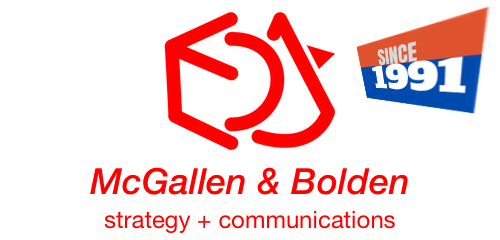In brief…
- AVE is a crude way for some practitioners to peg media coverage to advertising costs, and some practitioners even go so far as to multiply the corresponding advertising costs several times, or even more, with the argument that media coverage, being unbiased third-party mentions, are worth more than advertisements.
- While not untrue, the problem is that public relations has never really correlated to advertising as a sibling, but rather, something more akin to a parent or an uncle, on the same table as the C-suite in making strategic decisions and executing them to nurturing the brand.
- In this half a page, the competition for a cybersecurity vendor will not only be the top 5 this vendor arbitrarily listed, but also other vendors not mentioned, plus system integrators and consultants, government agencies, client-side adapters, financial services and risk management entities which measure risks, universities and researchers who specialize in this field, and even diverse industries such as automobile, oil and gas, supply chain, and so on.
Even in the 21st century, the dreaded AVE, or advertising value equivalence, still has not completely gone away.
An old evil not quite gone
AVE is a crude way for some practitioners to peg media coverage to advertising costs, and some practitioners even go so far as to multiply the corresponding advertising costs several times, or even more, with the argument that media coverage, being unbiased third-party mentions, are worth more than advertisements.
While not untrue, the problem is that public relations has never really correlated to advertising as a sibling, but rather, something more akin to a parent or an uncle, on the same table as the C-suite in making strategic decisions and executing them to nurturing the brand.
Measuring what we do is important. So then, what are some ways to measure public relations and its effectiveness? Let us dissect them.
Is it really the share?
One common yardstick evangelized by some platforms is “share of voice” or SoV. It is essentially the media mention of your company, divided by the summation of your mention and your competition’s, multiplied by a 100, to derive the percentage share of voice.
And in this rather rudimentary formula, you can immediately see the problem.
Imagine you are a cybersecurity company, and you peg the share of voice to your media mentions against the top 5 direct competitors. But, are you certain that other competitors not inside this arbitrary list you created, are not covered by the media and contribute to significant media mention? Also, given the diminishing media space, what you perceive as direct competitors are not the only competitors you have in the media. Let us illustrate.
Imagine a daily newspaper has a finite 100 pages, of which half a page is dedicated to covering cybersecurity. In this half a page, the competition for a cybersecurity vendor will not only be the top 5 this vendor arbitrarily listed, but also other vendors not mentioned, plus system integrators and consultants, government agencies, client-side adapters, financial services and risk management entities which measure risks, universities and researchers who specialize in this field, and even diverse industries such as automobile, oil and gas, supply chain, and so on. Plus, wire services may also consume part of this half page, as many mainstream media syndicate news from wire services, all decimating the limited and finite space a media can dedicate to a particular industry’s news. This is the same for television and radio stations, magazines, journals, and even online media.
While some practitioners turn to commercial media monitoring services, the trouble is that some services do not necessarily measure all media coverage. Some only measure coverage out of certain geographical regions; some measure only online coverage and neglect the wonderful broadcast coverage. Tread carefully when relying solely on such services as they may not cover all grounds, including important media platforms.
What’s worse, the number of media mentions may not equate to better branding, as not all news may put the brand in positive light. For example, if your company has 100 media mentions against the competition having just 5 mentions, but if your 100 mentions are all negative and syndicated, then a mere 5 but all positive mentions for your competition will trump your disastrous 100 coverage.
So, then this supposed share of voice will be decidedly skewed, and mostly a very rough approximation of one’s own narrow view of the actual share of voice in the media.
Barcelona as a modern option
The UK-based International Association for the Measurement and Evaluation of Communication or AMEC, founded since 1996, has been proposing a framework for more dependable and quantifiable public relations measurement, known as Barcelona Principles, now in its third version. Barcelona Principles 3.0 proposes the following as the basis for successful PR measurement:
- Agree that AVE is not the value of communication
- Setting goals is essential
- Measurement should identify outputs, outcomes, and potential impact
- Outcomes and impact should be distinct and known by all stakeholders
- Measure with quantitative and qualitative analyses
- Measure both offline and online platforms
- Transparent and ethical measurement with focus on learning
It is obvious that Barcelona Principles is farther and wider in perspective, and embraces the right view that public relations is best carried out at the C-suite level.
From the framework, it may appear slightly abstract at the field level and so, how should we approach public relations measurement practically?
Practical coverage reports
Fortunately, away from the grounds of AMEC, some folks have built tools to help with measuring public relations based on the Barcelona Principles.
For example, CoverageBook automates much of the online media coverage calculations. When you enter a media coverage URL, CoverageBook will fetch social engagements, estimated views, unique visits, domain authority, all of which are realistic and practical measurements. You can also input print and broadcast coverage and yardsticks into the same reporting platform, and churn out graphically stunning reports for online viewing or downloads. CoverageBook can also track podcast signals, so in the blossoming field of audio and video podcasts where mentions happen, you can track these too. This tool takes a huge chunk of mundane work from practitioners, leaving more time for more strategic work. Plus, CoverageBook is friendly to wallets for growing to established agencies or businesses.
If budgets are not a concern
If you have a bigger wallet, then you can also consider more traditional media monitoring services such as Brand24, which can track media such as news, blogs, social media, and podcasts, assuming you sign up their enterprise and decidedly priciest plans. The advantage of such services is that you can also rely on artificial intelligence powered sentiment analysis, which might be useful to discern if the quantity of media coverage levels up to good sentiment as well.
So, in a nutshell, do not restrict your perspective when measuring public relations work your agency and your team collaborate on. Look deeper and cast sights wider. The bottom line for public relations is about brand building and reputation protection, not merely counting news clips.
###

Dr Seamus Phan – Global C-suite Publicist & Strategist (Biochemist, Cybersecurity & Webdev pioneer, Author, Journalist) with 37 years of professional field experience.

